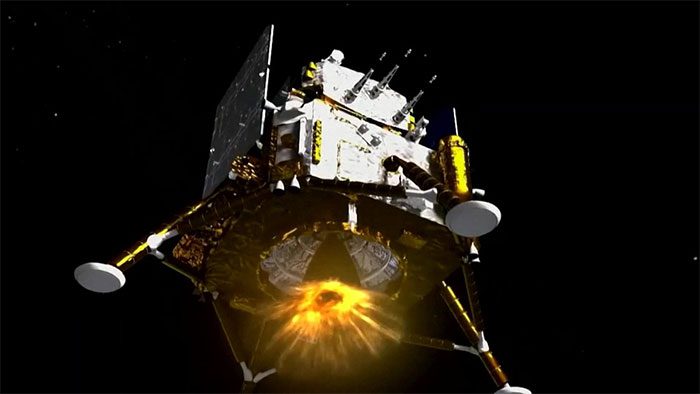The China National Space Administration (CNSA) announced on May 8 that its Chang’e-6 spacecraft has successfully entered a circular orbit around the Moon.
According to CNSA, at 10:12 AM on May 8 (Beijing time, which is 11:12 AM on the same day in Vietnam), Chang’e-6 successfully performed the braking procedure near the Moon before entering its orbital path around the Moon.

Chang’e-6 is tasked with collecting samples from the far side of the Moon to bring back to Earth.
The braking procedure near the Moon is a crucial orbital control measure for the Chang’e-6 spacecraft throughout its flight. This braking allows the spacecraft to withstand the gravitational pull of the Moon and orbit Earth’s only natural satellite.
Supported by the Queqiao-2 relay satellite, Chang’e-6 will subsequently adjust its orbit’s altitude and inclination while selecting the appropriate time to separate its components.
Chang’e-6 is responsible for collecting samples from the far side of the Moon and returning them to Earth. This marks the first time humans have undertaken such a mission in the history of lunar exploration.
According to scientist Wu Weiren, head of China’s lunar exploration program design team, humans currently have very limited knowledge about the far side of the Moon. If Chang’e-6 successfully completes its mission, scientists will gain direct evidence to better understand the environment and material composition of this area, which is critically important for further research.
The Chang’e-6 spacecraft is a complex consisting of an orbiter, a lander, a ascender, and a return vehicle. Upon reaching the Moon, the lander will assist the spacecraft in “soft landing” on the dark side. Within 48 hours of landing, a robotic arm will extend to collect rocks and soil from the lunar surface, while a drill will penetrate the surface before scientific analysis begins. After the samples are placed in a container and sealed, the ascender will transport the container from the Moon to dock with the orbiter, from which the return vehicle will then bring these samples back to Earth, with an expected landing in the Inner Mongolia Autonomous Region. According to CNSA, the entire process is planned to be completed within 53 days.
Previously, the Chang’e-5 mission brought back 1,731 grams of lunar material to China.


















































